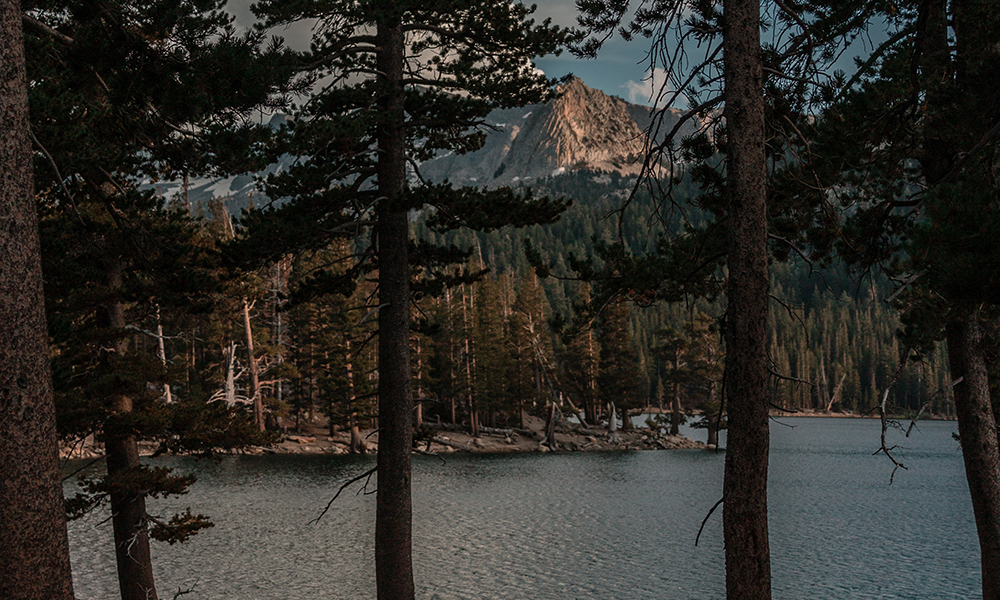
Politics
California’s CROP Project Responds to Toxic Threat of ‘Trespass Grows’
Cannabis may be legal in California, but illicit cultivation persists, especially in the National Forests, where it often takes a grave ecological toll. The CROP Project is now bringing together environmentalists, law enforcement and the legal cannabis industry to address the problem.
Five years after California voters approved cannabis legalization, police are still conducting militarized raids on illicit grows, especially those in the Emerald Triangle and hidden on public land.
Often, police justify these raids — politically risky given a populace that favors decriminalization — by pointing to the ecological tolls of the unregulated cannabis cultivation sites. For example, in a recent raid of a 9,000-plant grow in the Shasta-Trinity National Forest, authorities found clear-cut trees, diverted waterways, and the ground littered with open containers of fertilizer and rodenticide.
But a new group called CROP is now working in California to mitigate the damage of these illicit cannabis grows and it’s composed of a coalition that would have been unthinkable a decade ago: environmental organizations, law enforcement and the legal cannabis sector.
“We spent two years meeting with tribes, county governments, law enforcement, conservation organizations, timber companies, all the regional stakeholders affected by this issue,” said Rich McIntyre, director of the CROP Project. “And that includes meeting with the legal cannabis industry. Today, the legal industry is one of our strongest supporters.”
Cannabis Now reached Rich McIntyre at the offices of CROP Project (which stands for Cannabis Removal on Public Lands) in Sacramento. He says that some representatives from the legal cannabis industry are on board with CROP in large part because the illicit market continues to undercut the prices of the legal one.
“Forty to 70 percent of all black market cannabis in California comes off public lands, and it undercuts the legal market by 50 percent,” McIntyre says. “I can walk into dispensaries, and I’m seeing grams for six to fourteen dollars. On the black market, it is typically half that much.”
The CROP Project emerged three years ago from the Community Governance Partnership, a nonprofit that continues to be the project’s sponsor, and the California Wilderness Coalition. Their mission: “to address seemingly intractable problem of trespass grows on public lands.”
McIntyre sees the CROP Project’s role as primarily to spread awareness about the situation.
“Our job is to create the political coalitions to support state allocations to address the problem,” he says. “This includes educating the public and lawmakers on the issue and raise the alarm that our National Forests and wildlife are being wasted and slaughtered on a landscape level.”
Now, the CROP Project’s board of advisors includes representatives of the California Cannabis Industry Association and the Humboldt County Growers Alliance. McIntyre also claims support from the National Cannabis Industry Association, noting that he just spoke at the California Cannabis Business Conference that the NCIA held in Long Beach last month.
Citing law enforcement statistics, McIntyre states that 80% of “trespass grows” (an official term for cannabis growing on public lands) in the state are on National Forest lands, and over 90% are controlled by what he calls “drug trafficking organizations” or DTOs, another term borrowed from officials. Some of these DTOs are operating internationally, he says, and shipping illicit cannabis to markets in the eastern states through “gang organizations in New York and Chicago and St. Louis.”
Cannabis Industry Partners With Law Enforcement
CROP’s activities are now primarily in the three counties of the Emerald Triangle — Humboldt, Mendocino and Trinity — but McIntyre anticipates that it will expand to the rest of the state in the near future. He cites the Tahoe National Forest, in the Sierra Nevada, as a particular concern.
Given the long history of civil rights abuses around cannabis enforcement in Northern California — especially under the draconian Campaign Against Marijuana Planting (CAMP) — the notion of cannabis industry collaboration with police will sit uneasily with many. But McIntyre says that CROP is focused mostly on raising awareness about the environmental problems and not on widespread police enforcement against cannabis growers.
“I would say that unlike CAMP, CROP is entirely about trespass grows on federal lands,” he replies. “All enforcement stops at the federal land boundary. Our only call for additional enforcement are additional rangers on the ground in National Forests to dissuade foreign drug trafficking organizations from operating there.”
It should be noted that cannabis enforcement is not the purview of rangers, who are concerned with forestry, but the Forest Service Law Enforcement and Investigations branch. And whatever the CROP Project may advocate, current cannabis enforcement certainly does not stop at the National Forest line. Private homes have also been targeted in recent raids in the Triangle. It also appears clear that after decades of heavy enforcement have made little headway in decreasing illicit cannabis grows, law enforcement crackdowns might not be the most efficient path forward.
McIntyre acknowledges the government’s role in creating the factors that would inspire people to grow cannabis on public land, such as property forfeiture taking away people’s private land and over-regulation of small growers driving illicit cultivation.
“Clearly, the difficulty and cost of entry for smaller operators in California is a factor,” he says. “The taxes on cannabis in California are, in my opinion, too high, which is why 66% of the market remains illicit. And the refusal to allow more dispensaries in the state, there is only one for every 35,000 people, and most of these are located in coastal cities, is a serious limiting factor.”
Land Reclamation in the Back Country
Cannabis Now also spoke to the CROP Project’s regional field director Jackee Riccio, who is based in the Arcata area of Humboldt County. While McIntyre spends most of his time at his Sacramento office, Riccio actually gets her hands dirty in the rugged back-country of the Emerald Triangle.
“I assist on trespass grow reclamation,” Riccio says. “This mean clean-up and containment of toxicants.”
This work is overseen by Forest Service Law Enforcement and Investigations together with local law enforcement and environmental groups like Humboldt’s Integral Ecology Research Center and Trinity’s Watershed Center. Riccio takes pains to emphasize that her work is just reclamation — not “remediation” (which means actually cleansing the soil) or “restoration” (replanting trees and returning the site to exactly as it was before the damage). The contaminated soil and other waste is generally flown out by National Guard helicopters, and disposed of elsewhere.
“This is very specialized work,” Riccio says, but adds that she wants to get more stake-holders involved. “We’re trying to get funding for training the Karuk in this work.”
The Karuk Tribe is one of the largest indigenous groups in California, based in the northern Humboldt town of Orleans, and with much traditional territory in the forest lands of Humboldt and Siskiyou counties. “Historically, they feel they have been very excluded from what happens on their ancestral lands, and we’d like to change that,” Riccio says.
She is hoping to get Hazardous Waste Operations and Emergency Response (HAZWOPER) certification for Karuk tribal members from the federal Occupational Safety and Health Administration (OSHA).
A wildlife biologist who formerly worked for the U.S. Fish & Wildlife Service, Riccio said she learned about the problem of contaminated cannabis grows while offering horse-packing trips for hunters and adventure tourists.
“We ran into growers on a number of alarming instances, and rivers and streams we frequented were being contaminated,” Riccio said. Her company’s horses are now used in reclamation expeditions. “We just hauled out a lot black polyline, which was disposed of at a waste center,” Riccio says.
Riccio describes what she calls a “three-prong approach” to the problem.
“One is an organizing effort to make changes on a policy level and elevate the issue, so we can reclaim all the backlogged grow sites, as well as the new ones,” she says. “Two, we want to increase the Forest Service presence in the National Forests to reduce activation of new sites. If there’s no presence on the land, the grows are just going to pop up in new areas. And finally, we want to increase the criminal penalties for people who bring these toxicants onto our public lands. It is now a class B misdemeanor to be in possession of carbofurans, which means a $1,000 fine and 30 days in jail. That’s not close to being a severe enough punishment when that stuff is getting into our water sources that communities drink out of.”
McIntyre says 95% of these trespass grows are “using chemicals and pesticides that are banned in United States, such as sarin-based malathion.”
He points to carbofuran as a particularly dangerous pesticide found at these sites. “A quarter of a teaspoon will kill a 600-pound black bear,” he says. “It is banned for use in the United States, but it is produced by a company in Pennsylvania for export to Mexico and Central America, and smuggled back into the country.”
McIntyre claims that the rodenticides and pesticides are now widespread among wild animals, which he blames on illicit cannabis cultivation.
“More than 90% of mountain lions in the state are testing positive for rodenticide, primarily as a function of trespass grows,” McIntyre says. This also applies to 80% of fishes in the state, and 70% of northern spotted owls (because they eat the rodents). He cites another one of CROP Project’s partners, the Integral Ecology Research Center in Blue Lake, Humboldt County, as the source for these figures.
“One of dangers is that same poisons used to grow these products are ending up in water flowing off these crops, and ending up in the products themselves,” McIntyre says. “When you walk into a dispensary, you know that cannabis has been tested and screened for pesticides. With the black market, none of that occurs.”
TELL US, do you think law enforcement should play a role in protecting the environment from illegal cannabis grows?
























